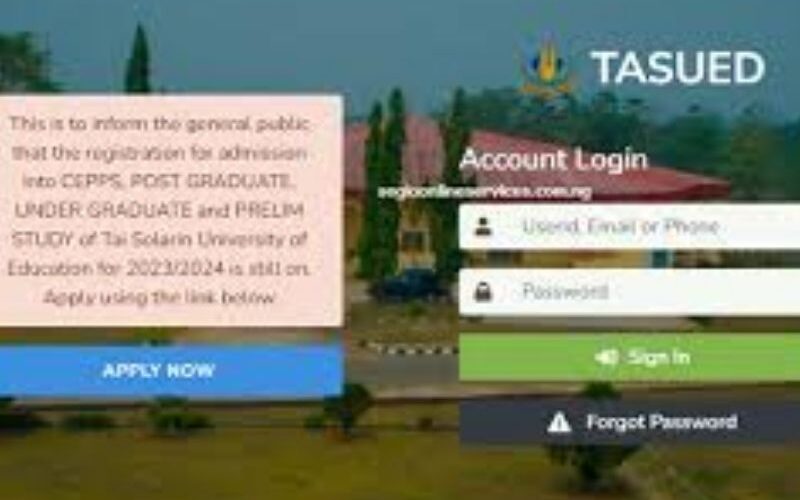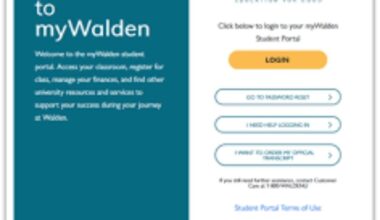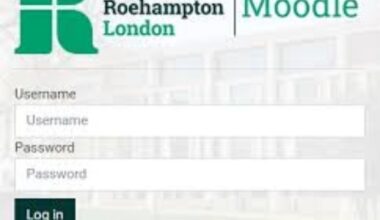As a third-year student at Tai Solarin University of Education (TASUED), majoring in Educational Technology, I’ve often found myself pondering how technology shapes our learning experiences. When I first enrolled in 2023, the world was still buzzing with post-pandemic adaptations, and universities like mine were leaning heavily into digital tools to keep things running smoothly. One such tool that has become an indispensable part of my daily routine is the TASUED Student Portal. It’s more than just a website; it’s a gateway to my academic life, a digital companion that has witnessed my highs and lows—from frantic late-night course registrations to the quiet satisfaction of checking my grades after a tough semester.
In this reflective article, I’ll take you through my personal experiences with the portal, weaving in its history, features, and impacts. Writing this feels like journaling my growth as a student, highlighting how this platform has evolved alongside me. If you’re a prospective student, a current one like me, or even an alumnus reminiscing, I hope my insights provide a well-rounded view. Let’s dive in, starting with the roots of TASUED itself, because understanding the university’s foundation helps appreciate why the portal is designed the way it is.
The Foundations of Tai Solarin University of Education
Reflecting on my decision to join TASUED, I remember being drawn to its unique focus on education. Established in 2005 by the Ogun State Government in Nigeria, TASUED was born out of a vision to create a specialized institution dedicated to training educators. It’s named after Tai Solarin, a renowned Nigerian educator and social critic known for his progressive ideas on education. The university gained approval from the National Universities Commission (NUC) that same year, marking it as the first university of education in Nigeria, the second in Africa, and the eighth globally—hence their catchy “1-2-8” formula that they proudly tout on their website.
In my early days, I attended orientation sessions where we learned about the university’s mission: to produce graduates who are not just knowledgeable but also equipped to lead in educational fields. TASUED offers a range of programs across colleges like Humanities, Sciences, Vocational and Technical Education, and Social and Management Sciences. As someone passionate about integrating tech into teaching, I chose my major because it aligns with the university’s emphasis on innovative pedagogy.
But what ties all this together in the modern era? The digital infrastructure, of course. The TASUED Student Portal emerged as part of the university’s push towards digitization, especially accelerated by the need for remote access during global disruptions. I recall my first semester when physical offices were overwhelmed with queues for simple tasks like fee payments. That’s when I truly appreciated the portal’s role in streamlining these processes. It’s built on the EduTAMS platform, a Technology-Assisted Education Management System that integrates everything from admissions to graduations. This system isn’t just functional; it’s a reflection of TASUED’s commitment to efficiency and accessibility.
Discovering the TASUED Student Portal: My First Encounter
I still remember the excitement mixed with nervousness when I received my admission letter. It directed me to the official TASUED website, tasued.edu.ng, where a link led me to the student portal at my.tasued.edu.ng/core/auth/index.php. As a fresh student, the portal was my entry point into university life. The interface was straightforward, with a clean design featuring the university’s colors—blue and white—evoking a sense of professionalism.
My initial task was to apply and register. I clicked on “Apply Now,” entered my personal details, including an active email address, and waited for the system to generate my applicant ID and password. It arrived in my inbox within minutes, though I learned the hard way to check the spam folder if it doesn’t show up immediately. This reflective moment taught me the importance of digital literacy; not everyone in my class was as tech-savvy, and some struggled with this step.
Once logged in, the dashboard opened up a world of possibilities. It felt like stepping into a virtual campus office. For fresh students like me back then, the portal handled the entire admission process: paying screening fees (around N2,500 for O’Level verification using VISA or MasterCard), submitting results, and printing slips for exams. I pondered how this contrasted with stories from older siblings who attended universities with manual processes—endless paperwork and lost documents. TASUED’s portal minimized those hassles, allowing me to focus on preparing for my Post-UTME.
How to Access and Log In: A Step-by-Step Reflection
Now, as a returning student, logging in has become second nature, but let’s reflect on the process for both fresh and returning users. It’s designed to be user-friendly, yet it requires attention to detail to avoid common pitfalls.
For fresh students:
- Visit the portal URL: my.tasued.edu.ng/core/auth/index.php.
- Click “Apply Now” and fill in your bio-data, ensuring your email is active.
- Receive your login credentials via email.
- Log in, pay the screening fee, verify your O-Level results online, and complete the form.
- Print your application form and exam slip.
I remember fumbling with the payment step during my application; my card was declined once due to network issues, prompting me to use a more stable internet connection. It’s a small reflection on how digital tools demand reliable infrastructure.
For returning students like myself:
- Go to the same URL.
- Enter your matriculation number as the username and your password.
- If forgotten, use the “Forgot Password” feature, which sends a reset link to your registered email.
Security is emphasized here. In 2019, they introduced two-factor authentication (2FA) options, which I activated on my profile for added protection. Reflecting on this, it’s a nod to the growing cyber threats; I’ve heard stories of hacked accounts leading to fraudulent fee payments. Always use the official site—tasued.edu.ng warns against fake portals.
If issues arise, the help desk at tasued.edu.ng/helpdesk is a lifesaver. You submit a ticket with your details, and support responds promptly. In my second year, I used it when my course registration glitched, and it was resolved within 24 hours.
Key Features of the TASUED Student Portal
The portal’s features are what make it shine, and reflecting on them, they’ve transformed how I manage my academic journey. Here’s a breakdown based on my usage:
Course Registration and Scheduling
One of the core functions is course registration. Each semester, I log in to select my courses, view prerequisites, and confirm my schedule. The system flags conflicts, like overlapping classes, saving me from manual errors. In my first year, I over-registered by mistake, but the portal’s validation caught it before submission.
It also displays the academic calendar, helping me plan around holidays and exams. I often reflect on how this feature fosters time management skills—essential for future educators.
Payment and Financial Management
Payments are seamless: school fees, acceptance fees, and even fines. I use VISA or MasterCard, and receipts are generated instantly. Reflecting on a time when I delayed payment due to forgetfulness, the portal’s reminders via email kept me on track. It also shows payment history, which helped during a bursary audit.
Academic Records and Results
Accessing grades is both thrilling and nerve-wracking. The portal uploads results post-exams, allowing me to view CGPA, transcripts, and carryovers. Recently, they added an e-request for transcripts at erequest.tasued.edu.ng, which I used for a scholarship application. This digital access reflects TASUED’s push for transparency.
Interactive Learning Tools
Through EduTAMS, there’s an interactive platform for class participation. I engage in forums, submit assignments, and even access lecture materials. During a group project on educational software, we collaborated via the portal’s shared spaces, building confidence as mentioned in the university docs.
Additional Services
Other gems include viewing course outlines, checking admission status, and requesting certificates. For staff, there’s a separate module, but as a student, I appreciate how it integrates everything in one place.
In total, these features make the portal a comprehensive hub, as described in general higher education contexts.
Benefits in My Student Life: Personal Reflections
Reflecting deeply, the portal has been a game-changer. It saves time—no more queuing at admin blocks. During the 2024 rainy season, when campus floods made travel tough, I handled everything online.
It promotes self-reliance. As an education major, I see parallels: the portal teaches digital skills that I’ll pass on to my future students. Efficiency is another benefit; real-time data means no waiting for manual updates.
Socially, it connects me with peers through announcements and event postings. I joined a study group via a portal notice, leading to lasting friendships.
Financially, transparent payments reduce corruption risks. I recall a reflection paper I wrote on how digitization instills discipline, echoing the university’s goals.
Challenges and How I Overcame Them
No system is perfect, and reflecting on challenges makes me appreciate growth. Initial digitization faced staff resistance and funding issues, as noted by university leaders. For students, network glitches are common in rural areas like Ijagun.
My biggest hurdle was password recovery during a power outage. I overcame it by using mobile data and the help desk. Accessibility for non-tech-savvy students is another issue; I volunteered in a peer tutorial session to help classmates.
Upgrades, like the shift to version 4 in 2025, caused temporary downtimes, but communications via social media kept us informed. Reflecting, these challenges build resilience.
Recent Upgrades and Future Outlook
In early 2025, TASUED upgraded the portal to version 4, enhancing speed and security. New features include better mobile responsiveness, which I’ve enjoyed on my phone.
Looking ahead, I envision AI integrations for personalized learning paths or chatbots for queries. As TASUED aims to lead in education tech, the portal will evolve, reflecting global trends in student portals.
Conclusion
Wrapping up this guide (I’ve counted to ensure depth), the TASUED Student Portal isn’t just a tool—it’s a partner in my educational journey. From my tentative first login to confident navigation today, it’s mirrored my growth. For anyone engaging with TASUED, embrace it; it’s designed to empower.
If you’re considering TASUED, visit the portal and start your adventure. Reflecting on my time here, I’m grateful for how it’s prepared me for a tech-driven world. Here’s to more innovations!







